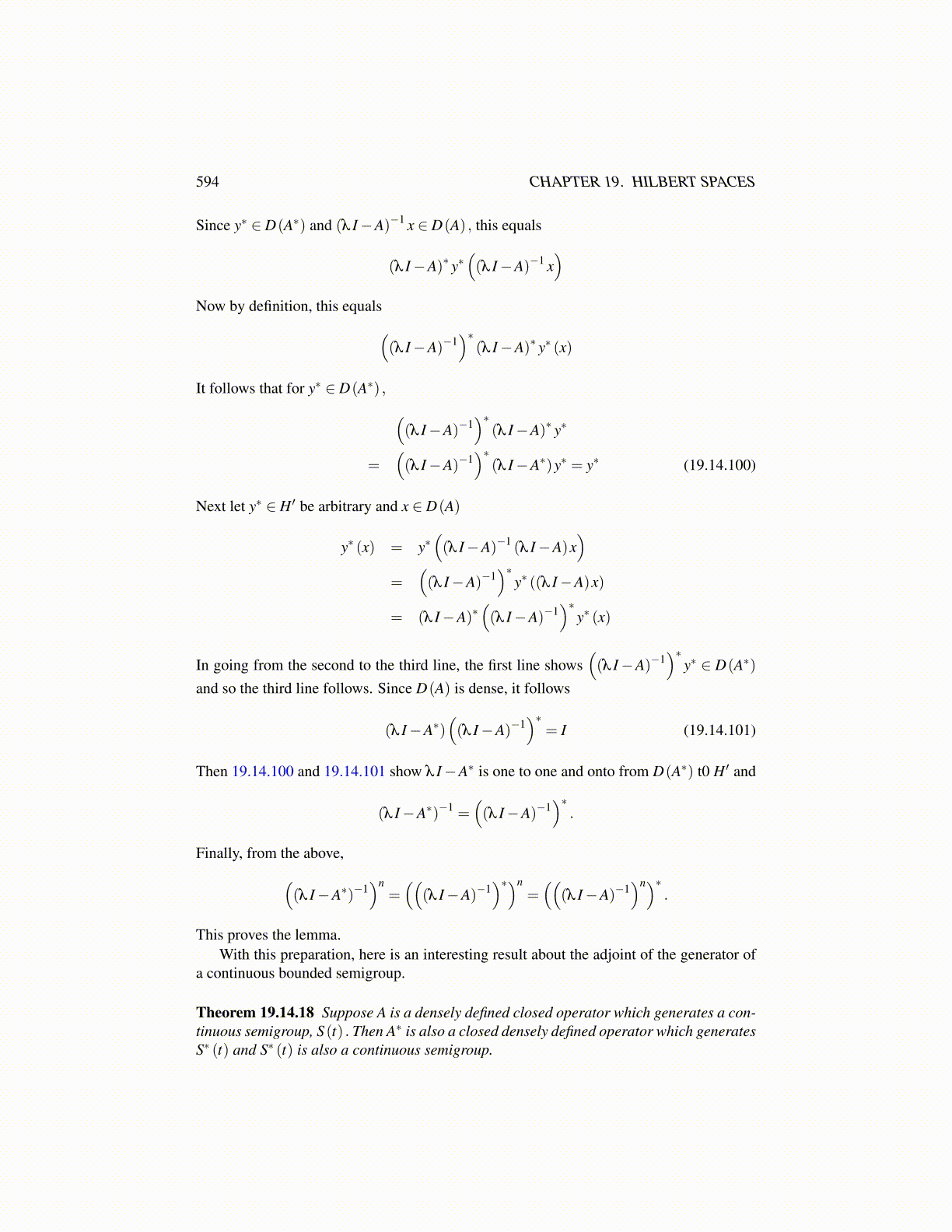
594 CHAPTER 19. HILBERT SPACES
Since y∗ ∈ D(A∗) and (λ I−A)−1 x ∈ D(A) , this equals
(λ I−A)∗ y∗((λ I−A)−1 x
)Now by definition, this equals(
(λ I−A)−1)∗
(λ I−A)∗ y∗ (x)
It follows that for y∗ ∈ D(A∗) , ((λ I−A)−1
)∗(λ I−A)∗ y∗
=((λ I−A)−1
)∗(λ I−A∗)y∗ = y∗ (19.14.100)
Next let y∗ ∈ H ′ be arbitrary and x ∈ D(A)
y∗ (x) = y∗((λ I−A)−1 (λ I−A)x
)=
((λ I−A)−1
)∗y∗ ((λ I−A)x)
= (λ I−A)∗((λ I−A)−1
)∗y∗ (x)
In going from the second to the third line, the first line shows((λ I−A)−1
)∗y∗ ∈ D(A∗)
and so the third line follows. Since D(A) is dense, it follows
(λ I−A∗)((λ I−A)−1
)∗= I (19.14.101)
Then 19.14.100 and 19.14.101 show λ I−A∗ is one to one and onto from D(A∗) t0 H ′ and
(λ I−A∗)−1 =((λ I−A)−1
)∗.
Finally, from the above,((λ I−A∗)−1
)n=((
(λ I−A)−1)∗)n
=((
(λ I−A)−1)n)∗
.
This proves the lemma.With this preparation, here is an interesting result about the adjoint of the generator of
a continuous bounded semigroup.
Theorem 19.14.18 Suppose A is a densely defined closed operator which generates a con-tinuous semigroup, S (t) . Then A∗ is also a closed densely defined operator which generatesS∗ (t) and S∗ (t) is also a continuous semigroup.